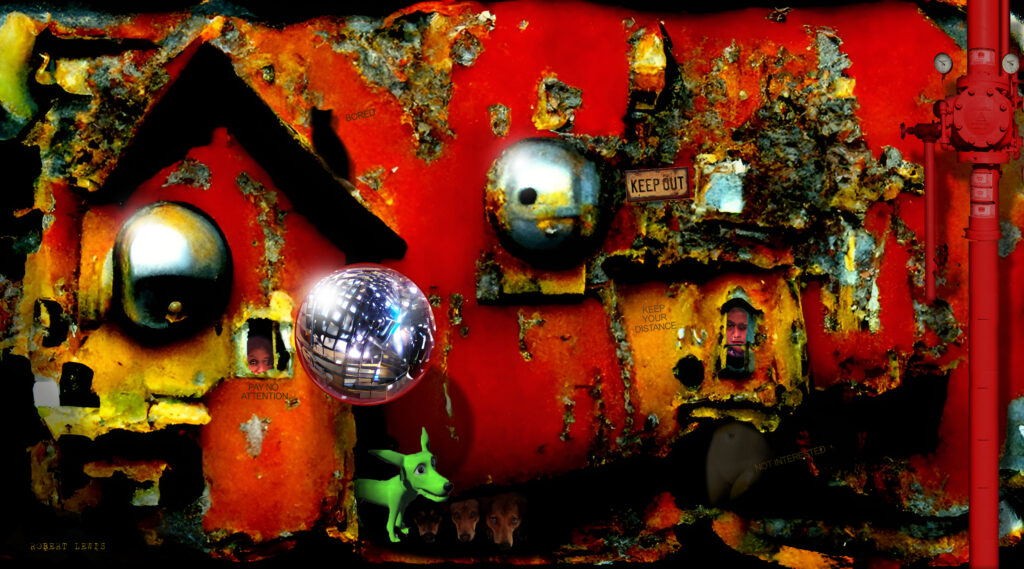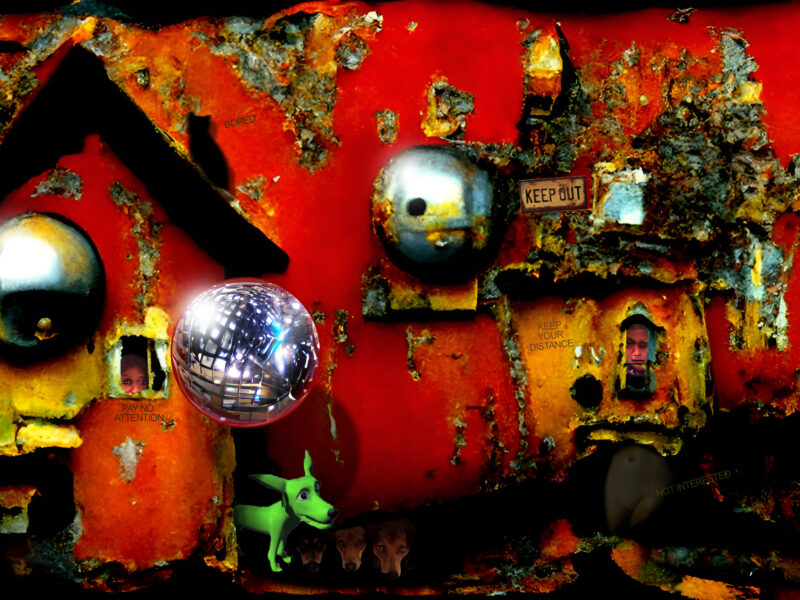Let the Art Speak for Itself

It’s not that titles are bad per se. It’s the thinking behind them that makes it cringe-worthy. Here is a good title: “Digital Collage #2 (Green Dog)”. See the explanation below.
Artists, gallery owners, museum directors, and just about everyone believe that titles on works of visual art are a rule. Titles can be useful for a variety of reasons, including:
- Distinguishing between different works of art: Titles can help identify one piece of art from another, especially in cases where multiple works are displayed together or in a collection.
- Providing context: A title can provide information about the subject matter or theme of the artwork, which can help the viewer understand the artist’s intention and message.
- Creating intrigue: An evocative or mysterious title can pique the viewer’s curiosity and encourage them to engage more deeply with the artwork.
- Adding meaning: A title can enhance the meaning or interpretation of the artwork, providing additional layers of understanding or depth.
- Facilitating communication: When discussing or referring to a work of art, having a title can make it easier to communicate about the piece.
The reasoning behind much of this is fundamentally flawed. There are several points to consider when giving titles to works of art.
It is important to acknowledge that the work itself and its title are two distinct entities. The artwork stands on its own as a non-verbal expression of the artist’s vision and creativity. The title, on the other hand, can serve as a reference point for the viewer and will distinguish one artwork from another in communication.
The visual artwork is non-verbal. It exists independently of any title. It is a finished and complete piece of art. It does not require additional language to exist. The title, therefore, should not be seen as a necessary component of the artwork but rather as an optional addition where it is useful for reference.
If you think your art cannot be understood without a defining title, then either you underestimate the art or the viewer. It is best to assume the viewer will understand the art in his own way.
The need to distinguish one artwork from another has led to the widespread belief that titles are necessary. However, this does not necessarily mean that titles need to be elaborate or overly descriptive. In every case, a simple number and a descriptor can be sufficient to identify and differentiate between artworks. “#2 (Green Dog)” is a straightforward and effective title that conveys both a catalog number and a visual feature of the artwork. In this case, the painting is not about a green dog. When a viewer thinks back on this painting, he remembers the green dog. Although the painting may not be about the green dog, this is the visual that sticks. It is a good reference phrase, not a title.
Munch’s “The Scream” is a good example of a visual reference. The figure seems to be screaming, but this is not the intention of the artist. The British Museum notes that “the actual scream, Munch claims, came from the surroundings around the person. The artist printed ‘I felt a large scream pass through nature’ in German at the bottom of his 1895 piece. Munch’s original name for the work was intended to be The Scream of Nature.” The painting does not show a person in the landscape screaming. It shows a person in the screaming landscape. Aside from the unfortunate confusion, “The Scream” is a good descriptor. Not a good title.
Avoid using manipulative or unnecessarily complex language in titles. The title should not be seen as an opportunity for the artist to impose their interpretation or influence the viewer’s experience of the artwork. Instead, it should serve as a neutral point of reference that allows the viewer to engage with the artwork on their terms while allowing for a sensible means of reference. There is no need to insult the viewer with what you, the artist, think is a clever, mysterious, or, worse yet, sentimental line of manipulative text.
Adding titles to works of visual art is a nuanced and complex process. So keep it simple by not titling in the usual way. Again, the artwork and its title are two distinct entities. The title should serve as a reference point rather than a necessary component of the artwork. A simple number and descriptor are sufficient to do the job and not detract from the viewer’s experience of the artwork.


